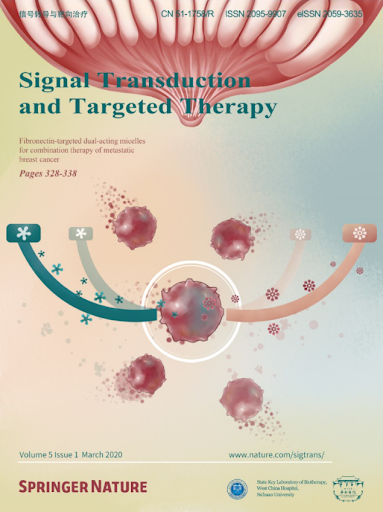Molecular mechanisms of unique therapeutic potential of CUDC-907 for MEF2D fusion-driven BCP-ALL.
IF 52.7
1区 医学
Q1 BIOCHEMISTRY & MOLECULAR BIOLOGY
引用次数: 0
Abstract
MEF2D fusions are found in a special subtype of B-cell precursor acute lymphoblastic leukemia (BCP-ALL) with poor prognosis. In this study, we conducted high-throughput drug screenings using cell line and ex vivo cell model harboring, respectively, MEF2D::HNRNPUL1(MH) and MEF2D::BCL9(MB), the two major MEF2D fusions. We identified CUDC-907 as a highly potent dual-target inhibitor of PI3K/HDAC, demonstrating remarkable efficacy in inducing robust lethality while maintaining selectivity for MEF2D fusion-expressing cells. CUDC-907 effectively induced apoptosis and promoted the down-regulation of pre-BCR signaling. We discovered that the hyperactivation of the PI3K-AKT signaling pathway, HDAC9, and BCL2 contributed to the sustained state of MEF2D fusion (+) BCP-ALL. Importantly, CUDC-907 exerted dual regulatory function by targeting the integrative pathways of MEF2D fusions. It suppressed the PI3K-CREB pathway and fusion gene expression, while simultaneously inhibited transcriptional activity regulated by the MEF2D fusion-HDAC axis. CUDC-907 demonstrated remarkable efficacy in patient samples carrying distinct MEF2D fusion variants in vitro. Furthermore, this compound's effectiveness and safety were confirmed in both MH/NRASG12D BCP-ALL mouse model and MB patient-derived xenograft (PDX) model, outperforming conventional therapies. These results support the therapeutic potential of dual-pathway inhibition in MEF2D fusion (+) BCP-ALL and suggest CUDC-907 as a promising candidate for precision treatment in fusion-driven leukemias with similar molecular dependencies.CUDC-907治疗MEF2D融合驱动BCP-ALL的独特治疗潜力的分子机制
MEF2D融合存在于预后不良的b细胞前体急性淋巴细胞白血病(BCP-ALL)的一种特殊亚型中。在本研究中,我们分别利用MEF2D::HNRNPUL1(MH)和MEF2D::BCL9(MB)这两种主要MEF2D融合体细胞系和离体细胞模型进行了高通量药物筛选。我们发现CUDC-907是一种高效的PI3K/HDAC双靶点抑制剂,在诱导强致死性的同时保持对MEF2D融合表达细胞的选择性。CUDC-907能有效诱导细胞凋亡,促进bcr前信号的下调。我们发现,PI3K-AKT信号通路、HDAC9和BCL2的过度激活有助于MEF2D融合(+)BCP-ALL的持续状态。重要的是,CUDC-907通过靶向MEF2D融合的整合途径发挥双重调控功能。抑制PI3K-CREB通路和融合基因表达,同时抑制MEF2D融合- hdac轴调控的转录活性。CUDC-907在体外携带不同MEF2D融合变异体的患者样本中表现出显著的疗效。此外,该化合物的有效性和安全性在MH/NRASG12D BCP-ALL小鼠模型和MB患者来源的异种移植(PDX)模型中得到证实,优于传统疗法。这些结果支持双途径抑制MEF2D融合(+)BCP-ALL的治疗潜力,并表明CUDC-907是具有类似分子依赖性的融合驱动白血病精确治疗的有希望的候选者。
本文章由计算机程序翻译,如有差异,请以英文原文为准。
求助全文
约1分钟内获得全文
求助全文
来源期刊

Signal Transduction and Targeted Therapy
Biochemistry, Genetics and Molecular Biology-Genetics
CiteScore
44.50
自引率
1.50%
发文量
384
审稿时长
5 weeks
期刊介绍:
Signal Transduction and Targeted Therapy is an open access journal that focuses on timely publication of cutting-edge discoveries and advancements in basic science and clinical research related to signal transduction and targeted therapy.
Scope: The journal covers research on major human diseases, including, but not limited to:
Cancer,Cardiovascular diseases,Autoimmune diseases,Nervous system diseases.
 求助内容:
求助内容: 应助结果提醒方式:
应助结果提醒方式:


